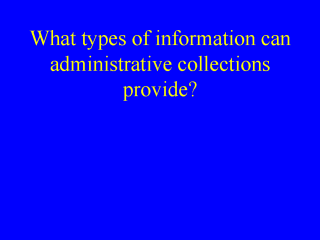|
|
|
|
front |1 |2 |3 |4 |5 |6 |7 |8 |9 |10 |11 |12 |13 |14 |15 |16 |17 |18 |19 |20 |21 |22 |23 |24 |25 |26 |27 |28 |29 |30 |31 |32 |33 |34 |review |
 |
The following slides show the types of information that can be provided by administrative data collections. Because of problems with the under-identification of Indigenous people in these collections, great care must be taken in interpretation. Comparisons between the Indigenous and non-Indigenous (or total Australian) population at a particular point in time are often less difficult to interpret than comparisons across time, either within or between groups. This is because the differences between Indigenous and non-Indigenous rates are often very large, despite some degree of under-ascertainment of events among the Indigenous population. The observed relationship may therefore under-estimate the true relationship, but evidence of disadvantage may still be apparent. By contrast, changes over time (either within the Indigenous population or between the Indigenous and non-Indigenous populations) are generally much smaller, so greater precision is needed. In addition, it is important to keep in mind that errors may exist in both the numerator and denominator, and that the relationship between the two sources of error may change over time.
|